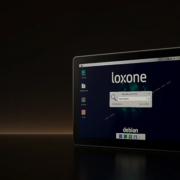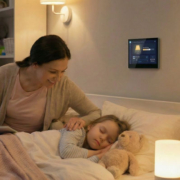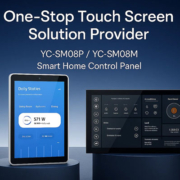Are There Any Customizable OEM/ODM Options Available for Smart Control Panels?
Absolutely — customizable OEM/ODM options are not only available for smart control panels, but they are becoming increasingly essential in today’s competitive smart home and smart building industries. Whether you’re a system integrator, product developer, real estate project manager, or brand owner, working with an OEM/ODM partner allows you to tailor smart control panel solutions to match your specific functional, branding, and integration requirements.
Let’s explore what OEM/ODM means, what customization options are typically available, and why choosing a customizable solution can be a major advantage.
What Do OEM and ODM Mean?
-
OEM (Original Equipment Manufacturer): You provide the specifications (design, hardware requirements, software features), and the manufacturer produces the smart panel under your brand.
-
ODM (Original Design Manufacturer): The manufacturer already has a ready-made product design, and you can request modifications such as logo printing, software customization, or minor hardware adjustments.
Customization Options Available for Smart Control Panels
1. Hardware Customization
-
Screen Size & Display Type
Choose from 4″, 5″, 7″, 8″, 10″, 15.6″, or even 21.5″ touchscreens with IPS or TFT panels, different resolutions, brightness levels, and capacitive touch. -
Processor & System Options
Select from a variety of SoCs like Rockchip RK3566, RK3568, RK3588, or MTK depending on your performance and OS requirements (Android/Linux/Windows). -
Memory & Storage
Customize RAM (2GB/4GB/8GB) and ROM (16GB/32GB/64GB) based on software demands. -
Connectivity Ports
Add or remove interfaces like: - RJ45 with PoE (IEEE 802.3 at/af)
- RS232, RS485, CAN
- GPIO, I2C, SPI
- USB, HDMI, TF card
- Wi-Fi (2.4G/5G), Bluetooth, 4G LTE
-
Enclosure Design
Choose between plastic housing or premium aluminum alloy casing, surface or flush mounting, custom bezels, and different color finishes.
2. Software Customization
-
OS Level Customization
- Boot logo and splash screen
- Pre-installed applications
- Launcher or kiosk mode
- Deep system modification (rooted Android, secure boot, device restrictions)
-
Firmware Development & BSP
Adapt the firmware to your existing ecosystem or hardware with BSP (Board Support Package) services. -
API/SDK Support
- Open APIs for integration with third-party platforms
- MQTT/Modbus/Tuya/Home Assistant compatibility
- Cloud connectivity and mobile app pairing
-
UI/UX Design
Full UI customization to match your brand identity or user requirements.
3. Branding & Packaging Customization
- Logo printing or laser engraving
- Custom product labels and stickers
- Tailored packaging (retail box or industrial bulk)
- Multilingual user manuals and quick-start guides
Who Needs OEM/ODM Smart Control Panels?
-
Smart Home Solution Providers
Need scalable, branded panels for lighting, curtain, HVAC, and access control. -
System Integrators
Require deep integration with third-party devices and customized protocols. -
Real Estate Developers & Hotels
Looking for a consistent design language and brand experience across rooms or units. -
Industrial and Commercial Automation
Need ruggedized, long-life panels that work with Modbus, BACnet, or industrial protocols. -
IoT Platform Owners
Want a dedicated control terminal customized to run proprietary software.
Why Choose Custom OEM/ODM Smart Panels?
-
Better Market Differentiation
Launch a unique product with features that fit your audience. -
Faster Time to Market
With ODM base models, you can customize and deploy quicker than developing from scratch. -
Seamless Integration
Get precisely the hardware interfaces and software behavior your system requires. -
Brand Control
Keep your identity consistent across your ecosystem—from hardware design to app UI.
How to Start OEM/ODM Smart Panel Projects
-
Define Your Requirements
List your desired screen size, interfaces, OS, branding, quantity, and customization scope. -
Choose a Reliable Manufacturer
Work with experienced companies that offer full-stack OEM/ODM development, including industrial design, hardware engineering, firmware development, and after-sales support. -
Request Samples and Documentation
Ask for product catalogs, SDK/API documents, and demo units for testing. -
Start Development & Testing
Customize and verify performance through close collaboration with the factory.






